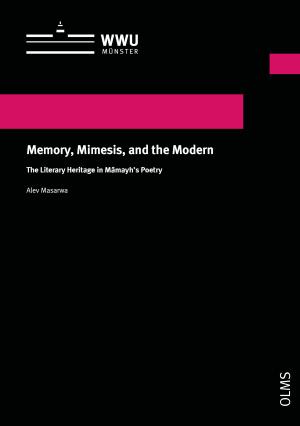In der letzten Zeit sind u.a. diese frei verfügbaren Titel erschienen:
Diasporic Muslim Fiction Does (Not) Exist: De/Constructing British and US-American Diasporic Muslim Narratives
Ismahan Wayah
https://doi.org/10.17879/78958420702
Diese Arbeit wurde 2022 als Dissertation an der Universität Münster angenommen.
In the aftermath of September 11, numerous publications on Islam and Muslims emerged that sought to capture the (rediscovered) Muslim Other in Europe and the United States. In their literary works, diasporic Muslim authors present the complexity of Muslim life. This dissertation examines four British Muslim narratives (Hanif Kureishi’s Black Album, Robin Yassin-Kassab’s The Road from Damascus, Leila Aboulela’s The Translator, and Diriye Osman’s Fairytales for Lost Children) and four American-Muslim narratives (Laila Lalami’s The Moor’s Account, Michael Muhammad Knight’s Taqwacores, Mohja Kahf’s The Girl in the Tangerine Scarf, and Sulayman X aka Nick Wilgus’s Bilal’s Bread). The selected works not only challenge Euro-American normative notions of religion, nation, and secularism, they also question and defy prevailing Muslim views on gender and sexuality.
Memory, Mimesis, and the Modern: The Literary Heritage in Mamayh’s Poetry
Alev Masarwa
https://doi.org/10.17879/33069637534
Diese Arbeit wurde 2022 als Dissertation an der Universität Münster angenommen.
Māmayh ar-Rūmī ad-Dimašqī was one of the most significant Damascan poets in the 10th/16th century, whose verses were sung from Damascus to Yemen. Based on the current results of the ongoing edition of Māmayh’s ‚dīwān‘ (‚Rawḍat al-muštāq wa-bahǧat al-ʿuššāq‘ „Garden of the ardent yearner and the joy of the lovers“) this study discusses a selection of poems in which the poet converses with the literary past by not only using mimetic and emulative techniques (like ‚taḍmīn‘, ‚iqtibās‘, and ‚taḫmīs‘ poems) but also through the use of more modern styles, forms and topics (like ‚ʿāṭil‘ verses, coffee poems, and vernacular poems). While the mimetic poems refer directly to the admired or canonized models of the past perpetuating the tradition into the poet’s present, the focus of the contemporary topics in the ‚dīwān‘ is on how the poet’s present is connected to the poetic and aesthetic practices of the past. With the analysis of Māmayh’s poetry, the study offers evidence of the impressive literary and intellectual background of an initially Ottomanized and then ‚Syrianized‘ (former soldier-) poet, as well as his tremendous poetic creativity in melding together the ‚old‘ and the ’new‘ in his verse.
Schriften von und über Fung Asseng und Fung Ahok: Untersuchung zur Phonologie und Transkription von zwei frühkantonesischen Dialekten des frühen 19. Jahrhunderts anhand von deutschen Quellen
Xueqi Jiang
https://doi.org/10.48796/20220609–000
Fung Asseng (馮亞星, 1792–?) und Fung Ahok (馮亞學, 1798–1877), zwei einigermaßen gebildete Matrosen aus der chinesischen Provinz Guǎngdōng oder Canton (廣東), waren die ersten Chinesen, die sich nachweislich in Deutschland aufhielten. In den 1820er Jahren fertigten sie in Halle und Potsdam umfangreiche zweisprachige Handschriften christlichen Inhalts an, in denen sie ihre frühkantonesischen Aussprachen zahlreicher chinesischer Schriftzeichen in das lateinische Alphabet transkribierten. Gleichzeitig berichteten auch einige deutsche Autoren über ihre Sprache. Diese Schriften, die von Asseng und Ahok selbst oder ihren deutschen Mitmenschen produziert wurden und summarisch als die „deutschen Quellen“ bezeichnet werden können, gelten als aufschlussreiche Materialien für die Erforschung der frühkantonesischen Sprache. Sie werden in der vorliegenden Arbeit zum ersten Mal systematisch untersucht, und zwar aus der Perspektive der chinesischen Dialektologie, der Missionarslinguistik sowie der (deutschen) Graphematik. Dadurch können nicht nur zwei historische Varianten des Frühkantonesischen phonetisch und phonologisch rekonstruiert, sondern auch die Transkriptionsregeln herausgearbeitet werden, die im Wesentlichen unter dem Einfluss der neuhochdeutschen Orthographie entstanden sind.
Siehe hierzu auch die Themenseite von CrossAsia: „Zur abenteuerlichen Lebensgeschichte der beiden ersten Chinesen in Deutschland“.

